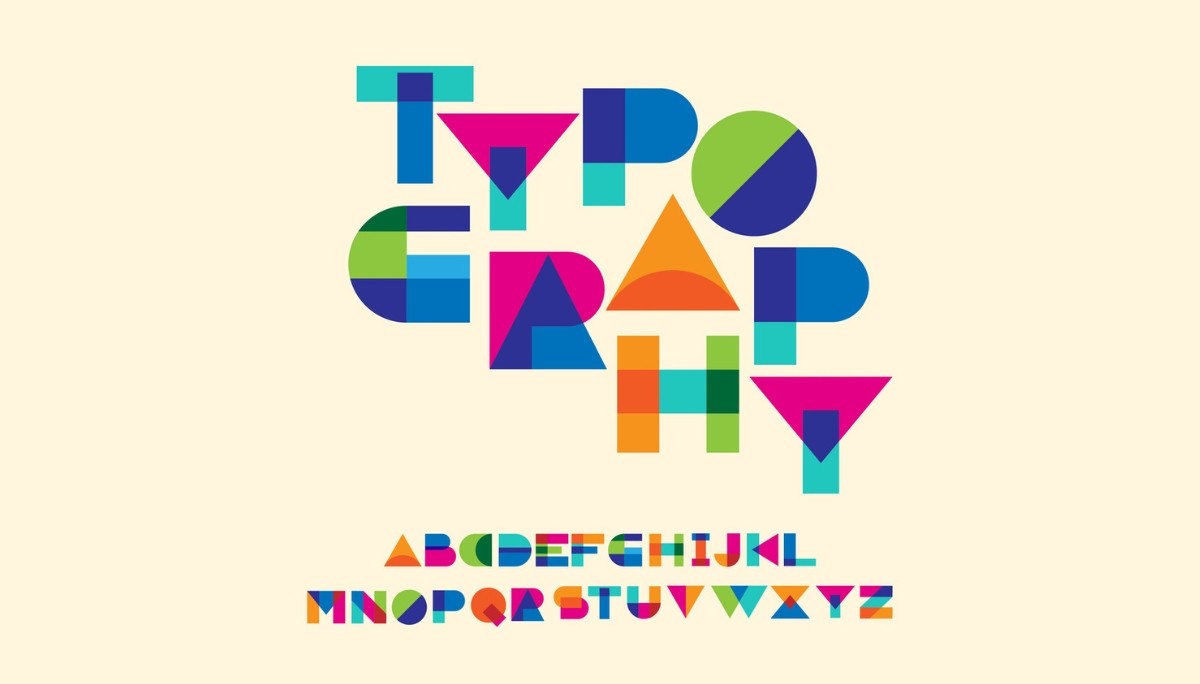What Is Object-Oriented Programming?
By
Liz Fujiwara
•
Sep 10, 2025
Object-oriented programming (OOP) is a foundational paradigm in software development that organizes code around objects, which represent real-world entities and concepts. By structuring programs in this way, OOP promotes modularity, reusability, and maintainability, making it easier for developers to manage complex systems. This approach also facilitates collaboration among development teams and simplifies debugging and updates. In this article, we will explore the core principles of OOP, including encapsulation, inheritance, polymorphism, and abstraction, and discuss why mastering these concepts is essential for every programmer aiming to write efficient and scalable code.
Key Takeaways
Object-oriented programming (OOP) centers around objects that encapsulate data and behavior, promoting modularity and maintainability in software design.
The core principles of OOP, including encapsulation, inheritance, and polymorphism, enhance code reusability and flexibility, making it easier to manage and extend software systems.
OOP manifests differently across programming languages, with each offering unique advantages, yet all adhere to the fundamental OOP concepts that foster efficient and scalable code development.
Understanding Object-Oriented Programming

Object-oriented programming (OOP) is a programming paradigm that transforms software design by centering it around objects. These objects, which represent real-world entities, bundle properties and behaviors into cohesive units, making programming more intuitive and manageable. Unlike procedural programming, which focuses on a linear sequence of tasks, OOP emphasizes the interaction of objects to accomplish functionality. This approach aligns with object-oriented design principles and is widely used in object-oriented programs.
In OOP, the core focus shifts from functions to data encapsulation and the relationships between objects. This paradigm organizes software design around data abstraction while promoting modularity and reusability. Encapsulating data and methods within objects ensures that changes in one part of the program do not inadvertently affect other parts. This approach enhances code maintainability and reduces the risk of errors.
The versatility of OOP languages is evident in its adoption across various programming languages. Languages like Java and C++ enforce strong type-checking at compile time, ensuring robust and error-free code. Python, with its dynamic typing, offers greater flexibility, though it carries a higher risk of runtime errors. Regardless of the language, OOP principles remain consistent, making it a powerful tool for programmers aiming to write efficient and maintainable code.
Core Principles of OOP

At the heart of object-oriented programming (OOP) are three core principles: encapsulation, inheritance, and polymorphism. These concepts form the foundation of OOP and are key to its effectiveness in software development.
Encapsulation is the practice of protecting an object’s data by restricting direct access to its attributes. This is done by using methods to control how data is accessed and modified, ensuring data integrity and security. Hiding the internal state of an object while exposing only essential information enhances modularity and simplifies troubleshooting.
Inheritance allows a new class to inherit properties and behaviors from an existing class, promoting code reuse and reducing redundancy. This concept enables the creation of class hierarchies where child classes can leverage the functionality of parent classes while adding their own unique attributes and methods. Inheritance streamlines development and fosters consistency across different parts of a program, particularly in class hierarchies.
Polymorphism, derived from the Greek words “poly” (many) and “morph” (form), allows methods to behave differently depending on the object invoking them. This flexibility lets a single function adapt to multiple forms of class instances without requiring multiple definitions. Polymorphism includes subtype polymorphism and dynamic binding, making code more versatile and easier to maintain.
Together, these principles facilitate the creation of adaptable, efficient, and maintainable software systems.
Classes and Objects in OOP
In object-oriented programming (OOP), classes and objects are the fundamental building blocks. A class serves as a blueprint for defining user-defined data structures, encapsulating both data and methods that operate on that data. Abstract data types within a class define the kinds of objects that can be created. This structure improves code maintainability compared to primitive data structures, allowing developers to design and implement their own classes.
Objects are concrete instances created from these class blueprints. Each object contains real data specific to itself, giving it unique attributes and behaviors. Objects can represent real-world entities or abstract concepts, with individual characteristics and internal details that differentiate them from other instances.
In the following subsections, we will explore class definitions in more detail and examine the process of creating and using objects in OOP.
Class Definition
Defining a class in Python involves several key components:
The class keyword, followed by the class name and a colon, starts the blueprint that encapsulates data and methods.
The __init__() method, often called the constructor, is used to initialize a new instance of the class.
The first parameter of the __init__() method, typically self, refers to the instance being created.
Within a class definition, attributes can be categorized into instance attributes and class attributes. Instance attributes are specific to each instance of the class, while class attributes are shared across all instances. For example, in a Dog class, species might be a class attribute, while name and age are instance attributes. This structure allows for both shared and unique properties among objects created from the same class.
Creating Objects
Creating a new object from a class is known as instantiation. In Python, this is done by calling the class name followed by parentheses, optionally passing arguments to the __init__() method. The __init__() method initializes instance attributes during object creation, ensuring each object starts with a consistent state.
Each time a class is instantiated, a unique object with its own memory address is created. This individuality allows objects to have distinct attributes and behaviors, even when they are instances of the same class. For example, multiple instances of the Dog class will each have their own name and age attributes, while sharing the species attribute.
This process of creating and managing objects is fundamental to the power and flexibility of object-oriented programming.
Inheritance and Polymorphism

Inheritance and polymorphism are two cornerstones of object-oriented programming (OOP) that enhance code reuse and flexibility. Inheritance allows one class, known as the child or subclass, to adopt the attributes and methods of another class, called the parent or superclass. This creates a class hierarchy that promotes consistency, reduces redundancy, and streamlines code maintenance.
Polymorphism enables methods to behave differently depending on the object invoking them, allowing the same function or method to work with objects of different types. This dynamic behavior supports code flexibility and simplifies the integration of new classes into existing systems.
Parent Class vs Child Class
In object-oriented programming (OOP), a parent class, also called a base class or superclass, defines a set of attributes and methods that can be inherited by a child class, or subclass. This allows the child class to reuse existing functionality while building on it.
Child classes can override parent class methods by defining methods with the same name, enabling customized behavior specific to the subclass. They can also introduce their own unique attributes and methods, adding additional functionality beyond what is inherited.
In Python, the super() function is commonly used within a child class to call methods from the parent class. This ensures that inherited behavior is correctly integrated while extending or modifying functionality. Using super() promotes a consistent, organized, and maintainable codebase across multiple classes.
Real Life Examples
Inheritance and polymorphism are widely used in game development to efficiently manage different characters. For example, a base class for game characters can define shared behaviors such as movement and attack, while subclasses for specific characters implement unique behaviors and attributes. This structure streamlines coding, reduces redundancy, and simplifies character management.
In graphical user interface (GUI) frameworks, polymorphism allows different widget classes to be treated as instances of a common base class, enhancing flexibility in interface design. A base class can define shared behaviors for rendering widgets, while each subclass implements its own specific rendering methods. This approach enables a cohesive, adaptable, and scalable user interface, highlighting the practical benefits of OOP in real-world applications.
Encapsulation and Data Hiding
Encapsulation is a core principle of object-oriented programming (OOP) that improves data security and integrity by restricting direct access to an object’s attributes. By using methods to control data access and modification, only essential information is exposed while the internal state remains protected. This practice safeguards critical data and simplifies code maintenance and debugging.
In Python, access specifiers determine how class members can be accessed. Private members are prefixed with double underscores, which triggers name mangling to prevent direct access from outside the class. Getter and setter methods provide controlled access to private attributes, allowing safe interaction with an object’s data.
This modular approach isolates issues within specific classes, making encapsulation a key factor in maintainable and reliable OOP design.
Advantages of Object-Oriented Programming

Object-oriented programming (OOP) provides many advantages that make it a widely used paradigm in modern software development. A major benefit is code reusability, which allows developers to build systems that are both adaptable and maintainable. Inheritance, for example, lets new classes adopt features from existing ones, reducing redundancy and promoting consistency across the codebase.
OOP also simplifies modifying and extending code. New data and functions can be integrated into existing systems seamlessly, making software highly adaptable. By modeling real-world concepts, developers can create reusable systems that improve efficiency and closely mirror real-world scenarios.
Polymorphism, another core principle of OOP, enables different object types to share a common interface. This allows methods to execute differently based on the object type, enhancing flexibility and reducing the need for multiple method definitions. Overall, OOP principles support the creation of robust, efficient, and scalable software systems, making it an essential tool for modern programmers.
Criticisms of OOP
Despite its many advantages, object-oriented programming (OOP) has faced criticism. A key concern is that OOP can introduce unnecessary complexity into software design. Deep inheritance hierarchies, for example, can make code harder to understand and maintain, especially in large systems, posing challenges for developers who are new to OOP.
Other critiques of OOP include:
It can complicate reasoning about state changes in concurrent programming.
Focusing heavily on data structures may overshadow other programming paradigms that could be better suited for specific tasks.
Overemphasis on encapsulation can create a false sense of security, potentially hiding vulnerabilities.
These criticisms underscore the importance of selecting the appropriate programming paradigm for a given task and remaining aware of the potential limitations of OOP in software development.
OOP in Different Programming Languages

Object-oriented programming (OOP) manifests differently across various programming languages, with each offering unique strengths and features. Java and C++ are prime examples of class-based OOP languages, known for their strong type-checking at compile time. These languages enforce strict adherence to OOP principles, providing a solid foundation for building complex software systems and demonstrating key characteristics of an object-oriented language, which is a critical area of study in computer science.
In contrast, languages like JavaScript and Scala blend object-oriented programming with functional programming, highlighting their versatility. JavaScript, widely used for web development, enables developers to build dynamic and interactive applications using OOP concepts. Scala, praised for its scalability and concurrency support, allows developers to write concise and efficient code by integrating both paradigms seamlessly.
Python is notable for its dynamic typing and flexibility, treating nearly everything as an object, including its data structures. This makes Python highly adaptable and suitable for applications ranging from web development to data science. Examining these languages illustrates how OOP principles can be applied differently while maintaining their core objectives, emphasizing the adaptability and varied implementation of OOP concepts across programming environments.
Introduction to Fonzi
In the rapidly evolving field of artificial intelligence, finding top-tier engineering talent can be challenging. Fonzi is a curated AI engineering talent marketplace that connects companies to pre-vetted AI engineers through its recurring hiring event, Match Day. The platform delivers high-signal, structured evaluations with built-in fraud detection and bias auditing, ensuring the integrity of the hiring process.
Fonzi is designed to make hiring fast, consistent, and scalable, with most hires happening within three weeks. By leveraging AI-driven evaluation mechanisms, companies can quickly and effectively find the right talent, whether they are early-stage startups or established enterprises looking to scale their AI capabilities.
How Fonzi Works
Fonzi evaluates candidates through a sophisticated AI-driven process that incorporates fraud detection and bias auditing. Unlike traditional job boards or black-box AI tools, the platform provides transparent, structured evaluations, ensuring companies receive high-quality, pre-vetted candidates. Its scalable approach enables hiring top AI talent efficiently, often within three weeks.
Why Choose Fonzi
Fonzi prioritizes both high-signal evaluations and a positive candidate experience. Its engaging and informative evaluation process ensures candidates feel valued and well-matched to the roles. The platform’s scalability makes it suitable for companies of all sizes, from early-stage startups to large enterprises, helping them grow their AI capabilities and maintain a competitive edge.
Summary
Object-oriented programming (OOP) is a powerful paradigm that has transformed software development. By organizing software design around objects and leveraging principles such as encapsulation, inheritance, and polymorphism, OOP enhances code reusability, maintainability, and flexibility. Its versatility across programming languages such as Java, C++, Python, JavaScript, and Scala further underscores its importance in modern software development.
With platforms like Fonzi, hiring AI engineering talent has become more efficient and reliable. Fonzi’s AI-driven evaluations, fraud detection, and bias auditing mechanisms ensure a fair and effective recruitment process, making it an invaluable resource for companies building strong AI teams. As demand for skilled AI engineers grows, Fonzi’s role in connecting companies with pre-vetted talent will play a crucial part in the future of AI-driven innovation.




